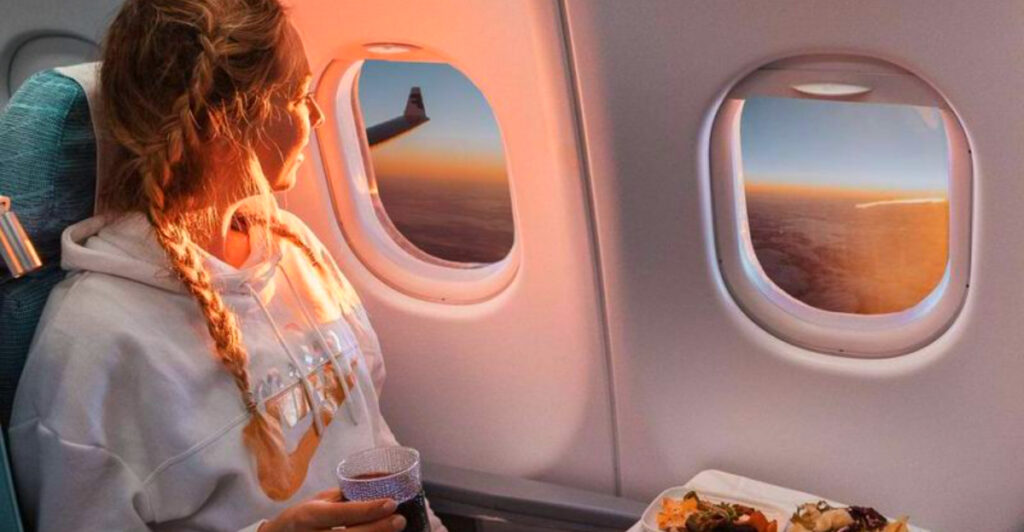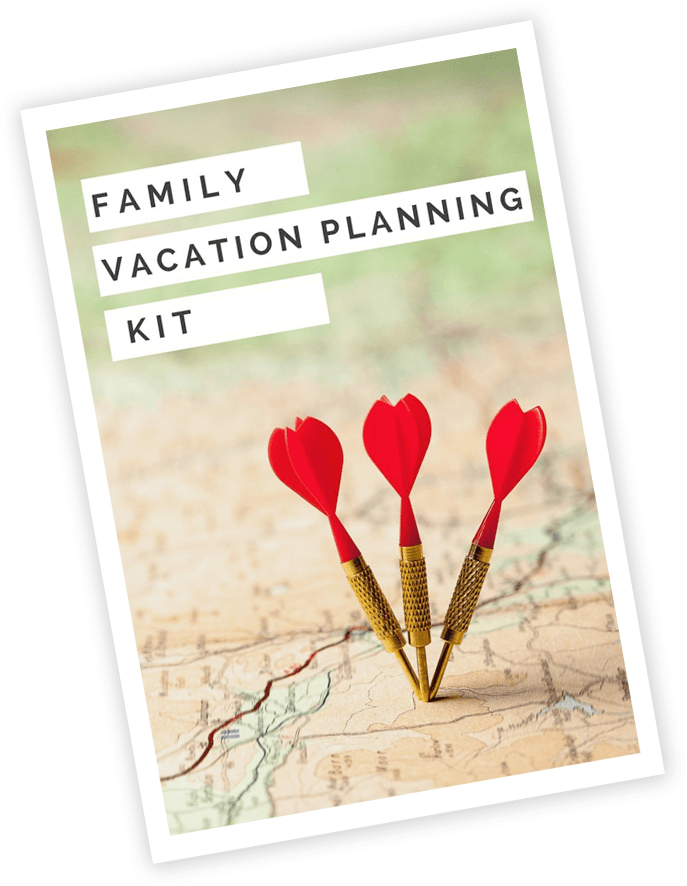Smart travelers know that your personal item bag is your lifeline during any trip. This small bag stays with you throughout your entire journey, unlike checked luggage that might get lost or delayed. Packing the right essentials in your personal item can save you from headaches, keep you comfortable, and ensure you’re prepared for unexpected situations that pop up while traveling.
1. Passport or Government ID and Boarding Info
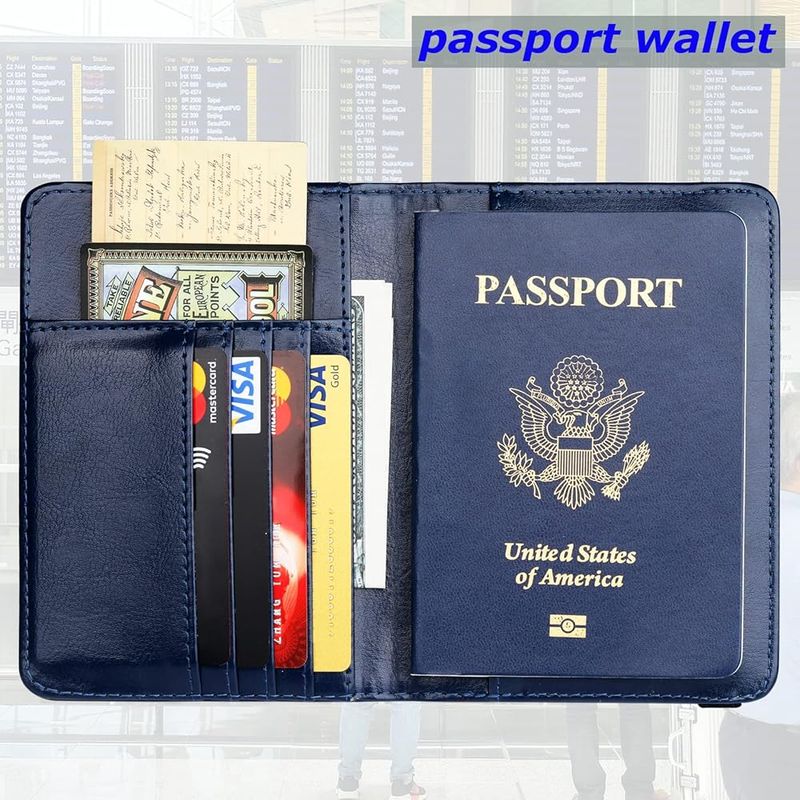
Your identification documents are literally your ticket to travel, so keeping them secure and accessible is non-negotiable. Always carry your physical ID in an easily reachable pocket of your personal item.
Creating digital backups of your passport, visa, and boarding pass gives you peace of mind if technology fails. Save these copies offline on your phone so you can access them even without internet.
Many seasoned travelers also keep photocopies in a separate compartment from their originals. This simple backup system has saved countless trips when documents get misplaced or stolen during busy travel days.
2. Essential Medications and Medical Documents
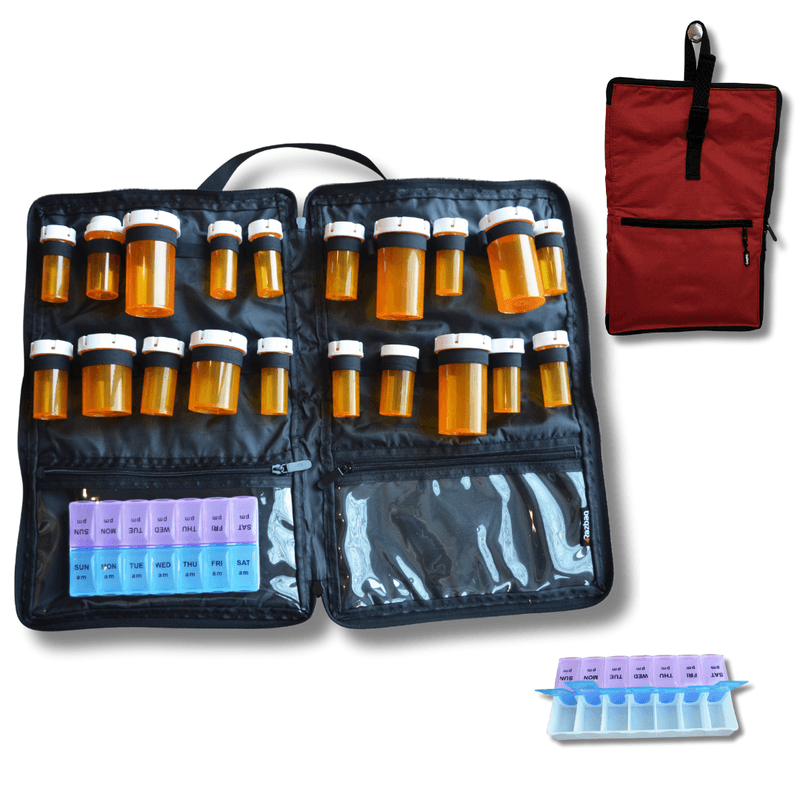
Never trust your life-saving medications to checked baggage where they could get lost, delayed, or exposed to extreme temperatures. Pack at least 48 hours worth of all prescription medications in their original containers.
Bring along prescription papers or doctor’s notes, especially for items like EpiPens, inhalers, or diabetes supplies. Security agents are familiar with medical necessities and allow reasonable quantities through checkpoints.
Smart travelers also pack a small card listing their medical conditions and emergency contacts. This information becomes invaluable if you face a medical emergency in an unfamiliar place where language barriers might complicate treatment.
3. Phone with Charging Cable
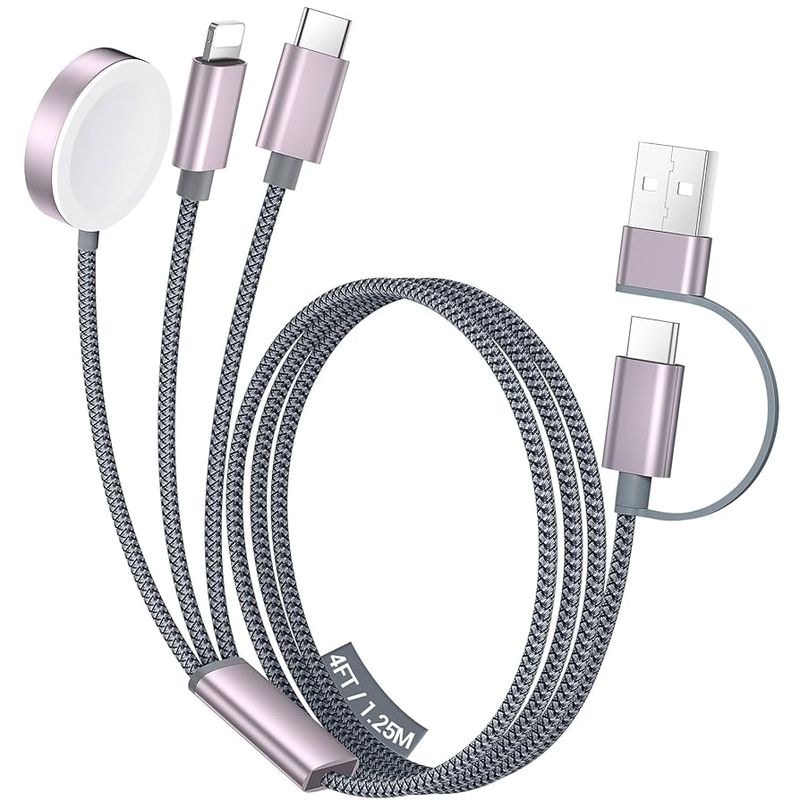
Your smartphone serves as your boarding pass, map, translator, entertainment system, and emergency communication device all rolled into one. Keeping it charged becomes absolutely critical during long travel days.
Focus on packing your charging cable rather than worrying about wall adapters, since airports and planes offer plenty of outlets but rarely provide cables. Store your cable somewhere easily accessible during your flight.
Consider bringing a longer cable than usual, as airplane and airport outlets aren’t always conveniently located near seating areas. A six-foot cable gives you flexibility to charge while staying comfortable in your seat or gate area.
4. Power Bank (Carry-On Only)
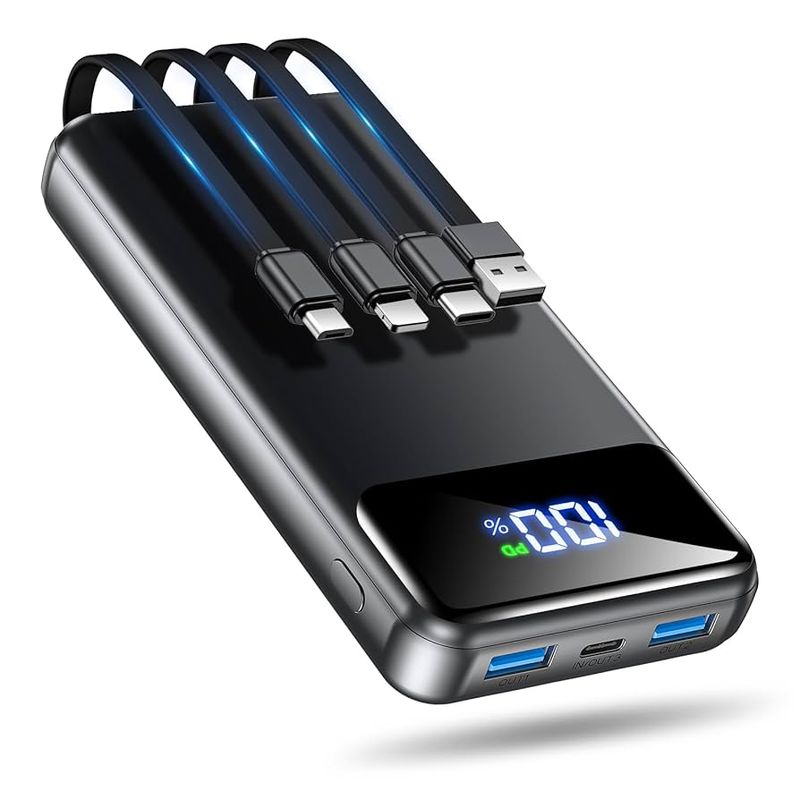
Portable power banks must travel in your carry-on bag due to lithium battery safety regulations – they’re completely banned from checked luggage. Most airlines allow power banks up to 100 watt-hours without special approval.
Check your power bank’s rating before packing, as larger capacity units require airline approval or might be prohibited entirely. The rating is usually printed on the device itself or listed in the manual.
A fully charged 10,000mAh power bank can typically recharge most smartphones 2-3 times, which easily covers a full day of heavy travel use. This backup power source becomes essential during long layovers or flight delays when outlets are scarce.
5. Laptop or Tablet and Chargers (If You Use Them)
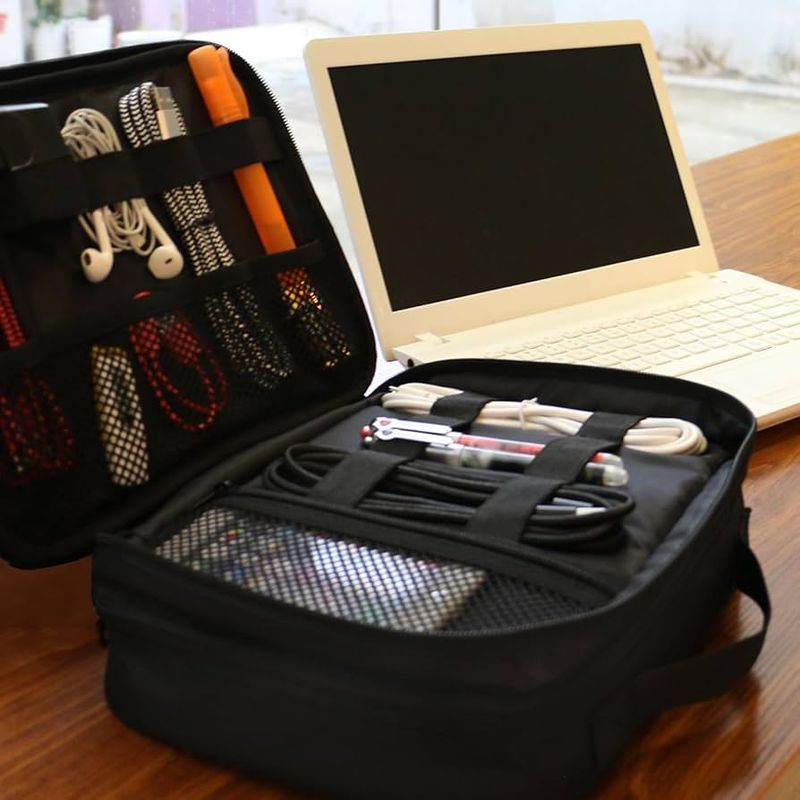
Electronics belong in your personal item for multiple important reasons beyond just convenience. Checked bags endure rough handling that can damage delicate screens and internal components of laptops and tablets.
Security concerns also make carry-on storage essential, as expensive electronics in checked bags become targets for theft. Airlines recommend keeping all valuable electronics with you throughout your journey.
Pack your device chargers in the same bag to avoid the frustration of having a dead laptop when you need it most. Many modern laptops can also charge your phone through USB ports, creating a backup charging option during emergencies.
6. Headphones or Earbuds — Plus a Wired Backup
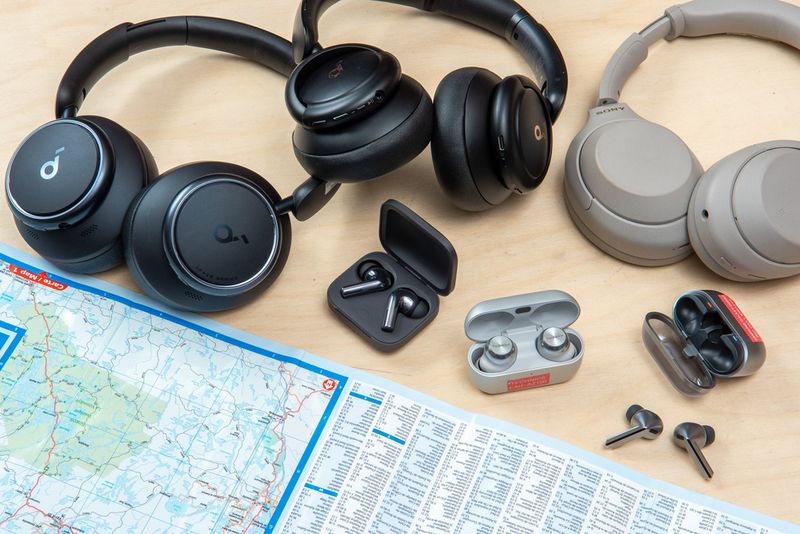
Bluetooth headphones are convenient until their battery dies or they refuse to pair with the airplane’s entertainment system. Many in-flight screens still require old-fashioned wired connections for audio.
Pack a cheap pair of wired earbuds as your backup plan, even if you prefer wireless options for daily use. These backup earbuds don’t need to be fancy – they just need to work when your primary headphones fail.
Noise-canceling features become especially valuable during flights, helping you sleep better and reducing fatigue from constant engine noise. Good headphones can transform a miserable red-eye flight into a peaceful, restful experience that leaves you refreshed upon arrival.
7. Empty Reusable Water Bottle
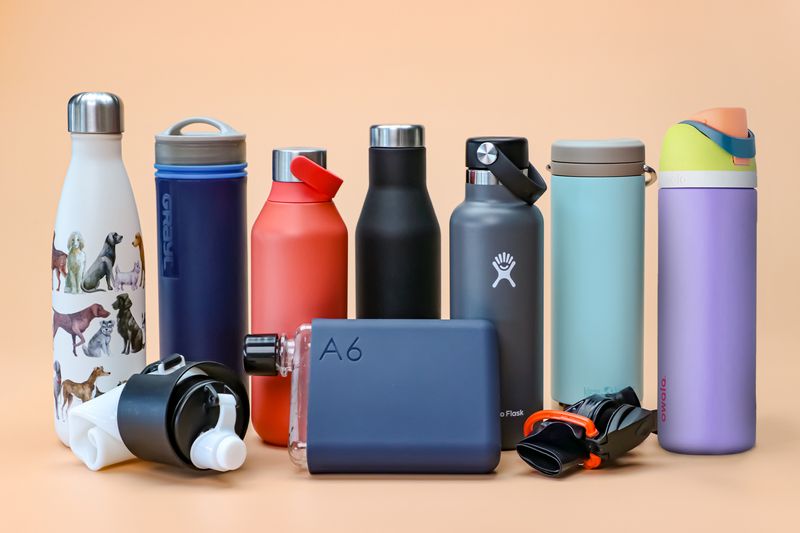
Airport water prices are notoriously expensive, and staying hydrated during travel fights jet lag, headaches, and general discomfort. An empty reusable bottle passes through security without issues.
Fill your bottle at water fountains or ask restaurant staff for free refills once you’re past security checkpoints. Many airports now feature special bottle-filling stations designed specifically for travelers.
Proper hydration becomes even more important during flights, as cabin air is extremely dry and can quickly lead to dehydration. Flight attendants appreciate passengers who bring their own bottles, as it reduces their workload during busy service times.
8. TSA-Size Liquids Bag with Quick-Use Toiletries
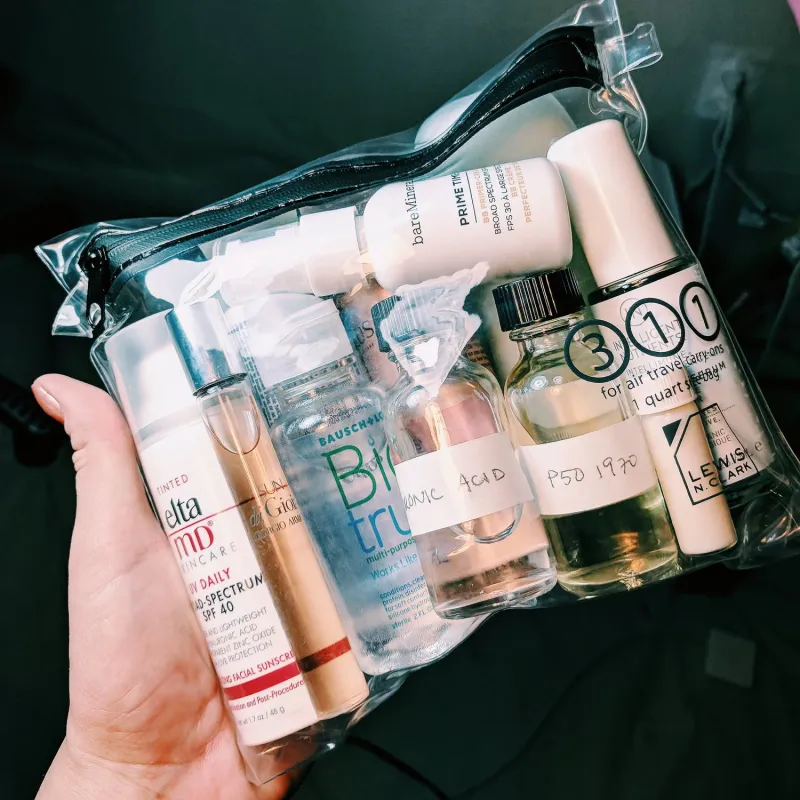
The 3-1-1 rule governs liquid carry-ons in many countries: containers must be 100ml or smaller, all fitting in one quart-sized clear bag. Smart packing focuses on essentials you’ll actually use during travel.
Pack lip balm, facial moisturizer, toothpaste, and small deodorant for quick freshening up during long journeys. Solid versions of toiletries often work better than liquids for travel purposes.
Medical liquids and baby care items have separate, more generous allowances than regular toiletries. Keep your toiletry bag easily accessible, as you’ll need to remove it during security screening at most airports worldwide.
9. Healthy, Non-Messy Snacks

Airline meals don’t always match your schedule, dietary needs, or taste preferences, making personal snacks a smart backup plan. Focus on protein-rich options that provide sustained energy rather than quick sugar crashes.
Granola bars, nuts, crackers, jerky, and simple sandwiches without messy sauces travel well and satisfy hunger effectively. Avoid liquids, yogurts, and soups that security won’t allow through checkpoints.
Having your own snacks also saves money at expensive airport restaurants and gives you control over ingredients if you have allergies or dietary restrictions. Pack enough to share – hungry fellow travelers always appreciate generous companions.
10. Warm Layer and Cozy Socks
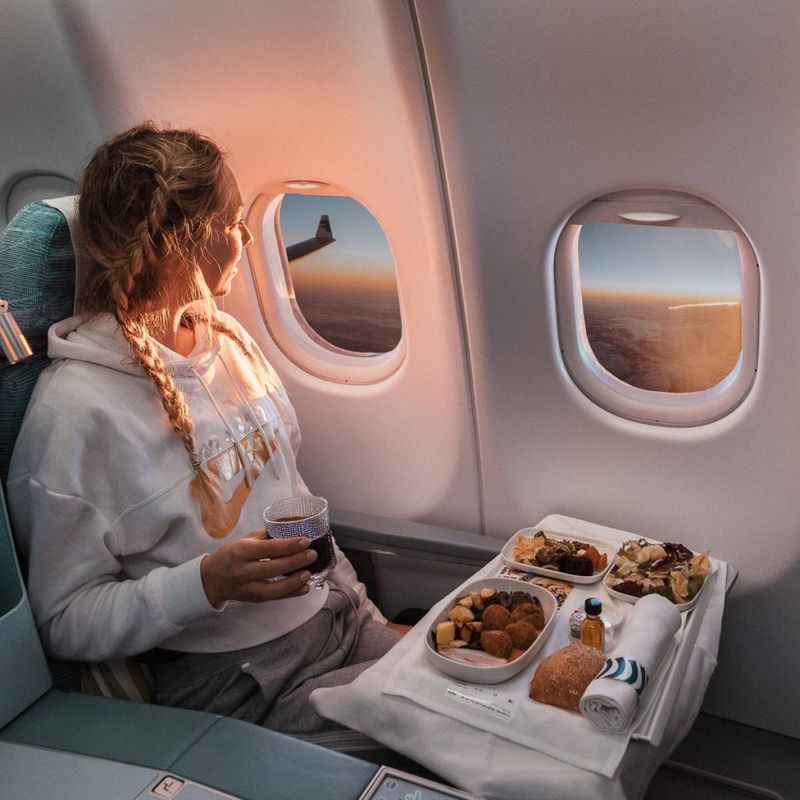
Airplane cabins maintain cool temperatures for safety and passenger comfort, but this often leaves travelers shivering during long flights. A light sweater or hoodie makes an enormous difference in your comfort level.
Cozy socks might seem like a small detail, but they transform your flying experience when you can slip off tight shoes and wiggle your toes freely. Many experienced flyers swear this simple comfort beats expensive gadgets.
Layer smart by choosing items you can easily add or remove as cabin temperatures fluctuate. A versatile cardigan or zip-up hoodie adapts to changing conditions better than a heavy, non-removable sweater that might become too warm.
11. Spare Set of Clothes and Underwear
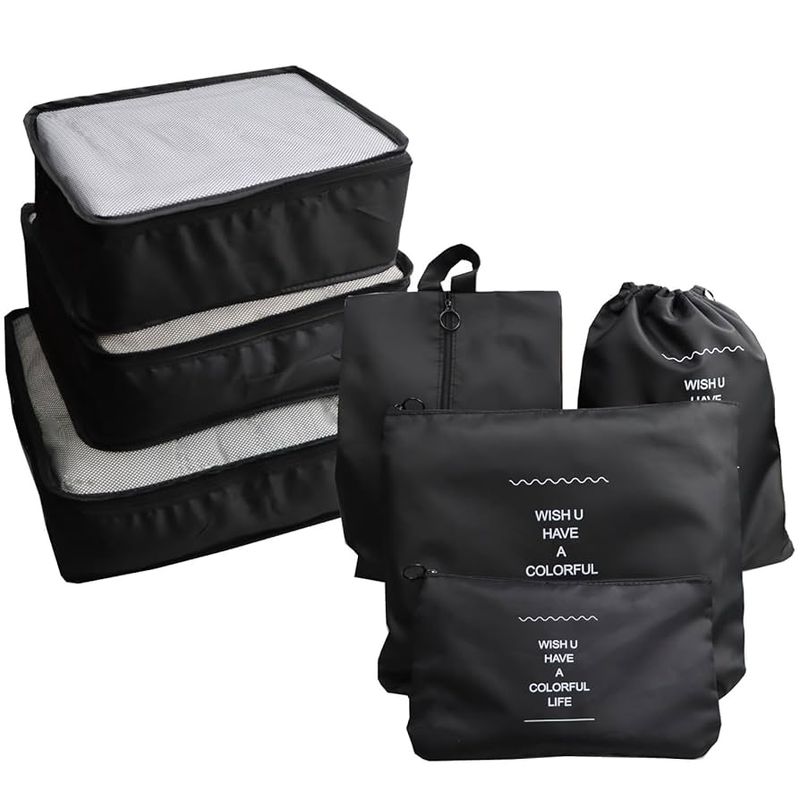
Delayed baggage happens to even the most careful travelers, leaving you stranded with only the clothes on your back. One complete change of clothes in your personal item saves your first day when luggage goes missing.
Roll clothes tightly and use compression pouches to maximize space in your small personal bag. Focus on versatile pieces that coordinate with what you’re wearing and suit your destination’s climate.
Fresh underwear and a clean shirt can make you feel human again after a long travel day, even if your main luggage arrives later. This small backup prevents you from wearing the same clothes for days while waiting for delayed bags.
12. Glasses/Contacts Kit
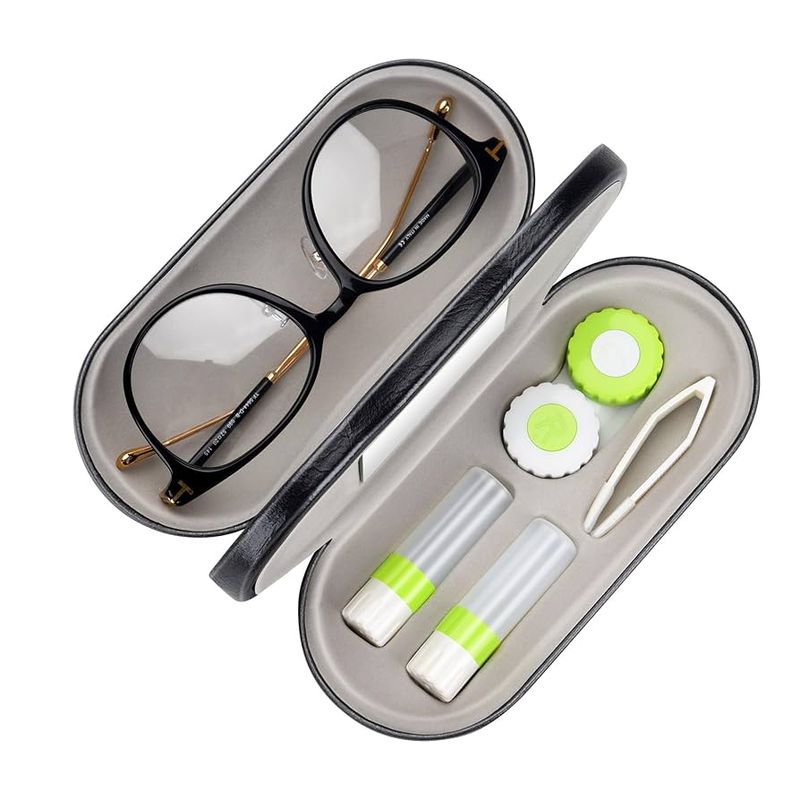
Prescription eyewear is nearly impossible to replace quickly while traveling, especially in foreign countries where your prescription might not transfer easily. Always pack backup glasses or extra contacts in your personal item.
Contact lens wearers need travel-sized solution, a clean lens case, and backup glasses for emergencies. Even daily disposable contacts benefit from having cleaning solution available for unexpected situations.
Consider the consequences of losing your only pair of glasses in an unfamiliar place – you’d be essentially helpless until you could find an eye doctor. Smart travelers treat vision correction as seriously as they treat their passport and medications.
13. Hygiene Quick Kit
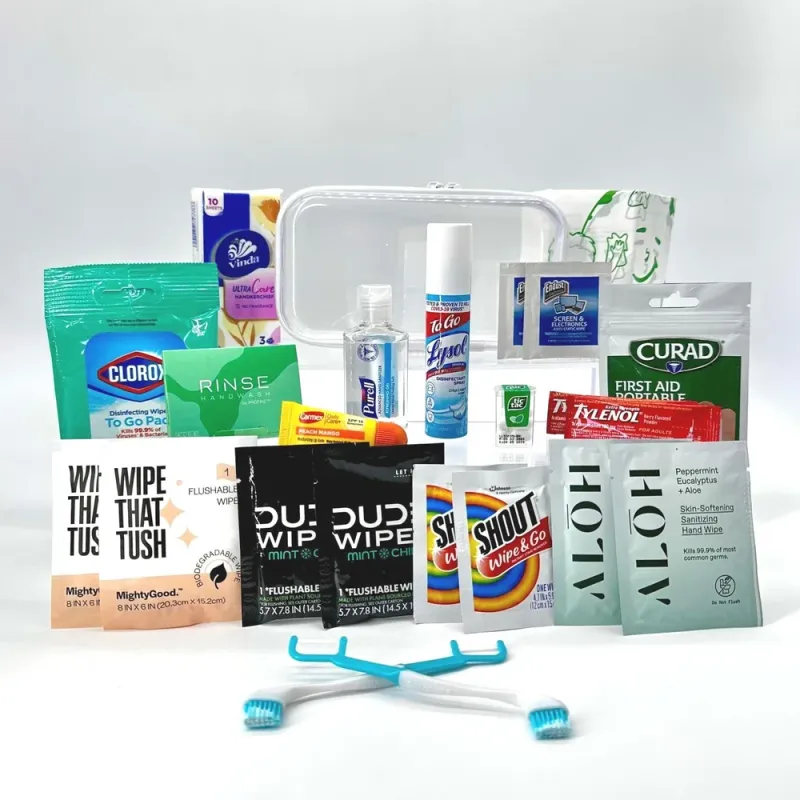
Travel exposes you to countless germs on surfaces that thousands of people touch daily. A compact hygiene kit helps you stay healthy and comfortable throughout your journey.
Pack travel tissues, disinfecting wipes, small hand sanitizer within local liquid rules, and a compact toothbrush for quick freshening up. Antibacterial wipes also clean tray tables and armrests before you use them.
Post-pandemic travel has made personal hygiene even more important, and many travelers feel more confident with their own supplies readily available. A quick teeth brushing or face wipe can revitalize you during long layovers or after overnight flights.
14. Wallet Essentials and Can’t-Replace Valuables
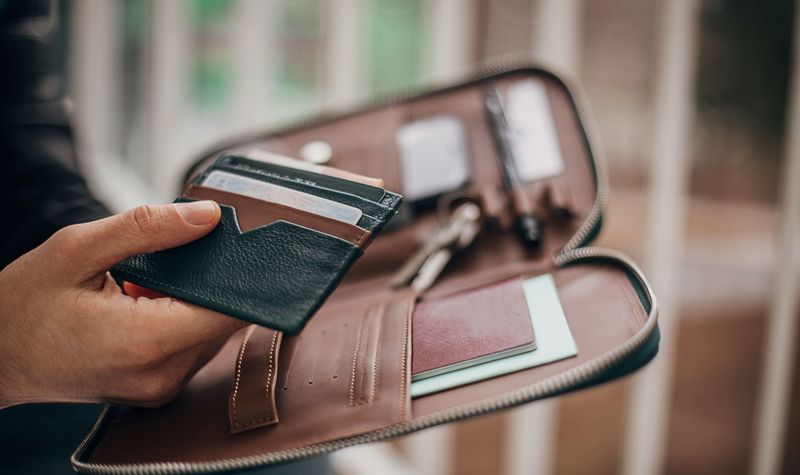
Your wallet holds the keys to your entire trip – literally and figuratively. Pack your primary credit card plus a backup card from a different bank in case one gets declined or compromised during travel.
Carry some local cash for immediate needs like tips, small purchases, or transportation from the airport. Include copies of important travel documents, insurance details, and emergency contact information in separate compartments.
Home and car keys, along with small irreplaceable valuables, belong in your personal item where you can monitor them constantly. Losing these items from checked baggage could create expensive problems that extend far beyond your current trip.

